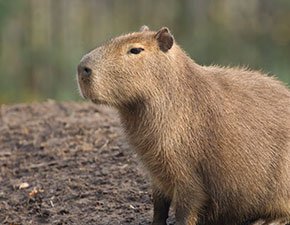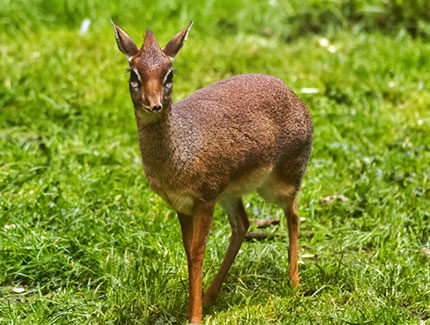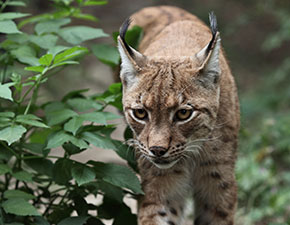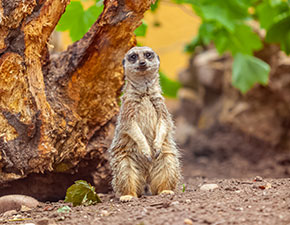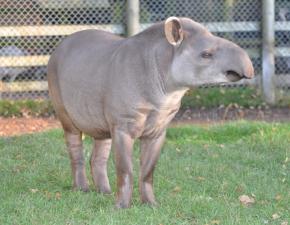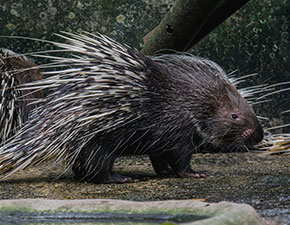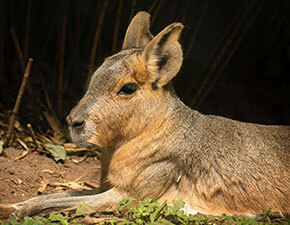
Columbian Spider Monkey
Ateles fusciceps rufiventris
IUCN red list status:
Endangered
For more information, please visit iucnredlist.org

Colombian Spider Monkeys can be found in Colombia and Panama, inhabiting dry forests, humid forests, and cloud forests.

Their diet mainly consists of fruit as well as leaves, seeds, insects and flowers.

Colombian Spider Monkeys live 30+ years in captivity.

The female chooses a male from her group for mating. Each female bears only one offspring every three to four years.
Colombian Spider Monkey
About the Colombian Spider Monkey
The Colombian Spider Monkey originates from the humid forests of Colombia and Panama. This black primate has long limbs, thumb-less hands and a prehensile tail, which it can use for grasping, holding or hanging in the trees. It spends its days climbing and swinging through the upper levels of the canopy and with its long, slender limbs, it can appear from a distance to resemble a spider.
Spider Monkeys feed on fruits and, as they travel throughout the forest, they disperse undigested seeds through their manure. These seeds replenish the rainforest vegetation. Spider monkeys live and move agilely through the small branches of the high forest. They are entirely day active and live in groups of variable size, depending on the availability of food. Where fruit trees are small and scattered, groups of only two to five animals are seen, but where food is more abundant, they live in groups of up to 30.
Did you know?
The Colombian Spider Monkey is one of two sub-species of Brown-Headed Spider Monkey: Ateles fusciceps. They have a prehensile tail which is like having a fifth limb which enables them to move through the trees. Spider Monkeys can produce a wide range of sounds and will “bark” when threatened.
